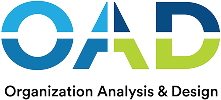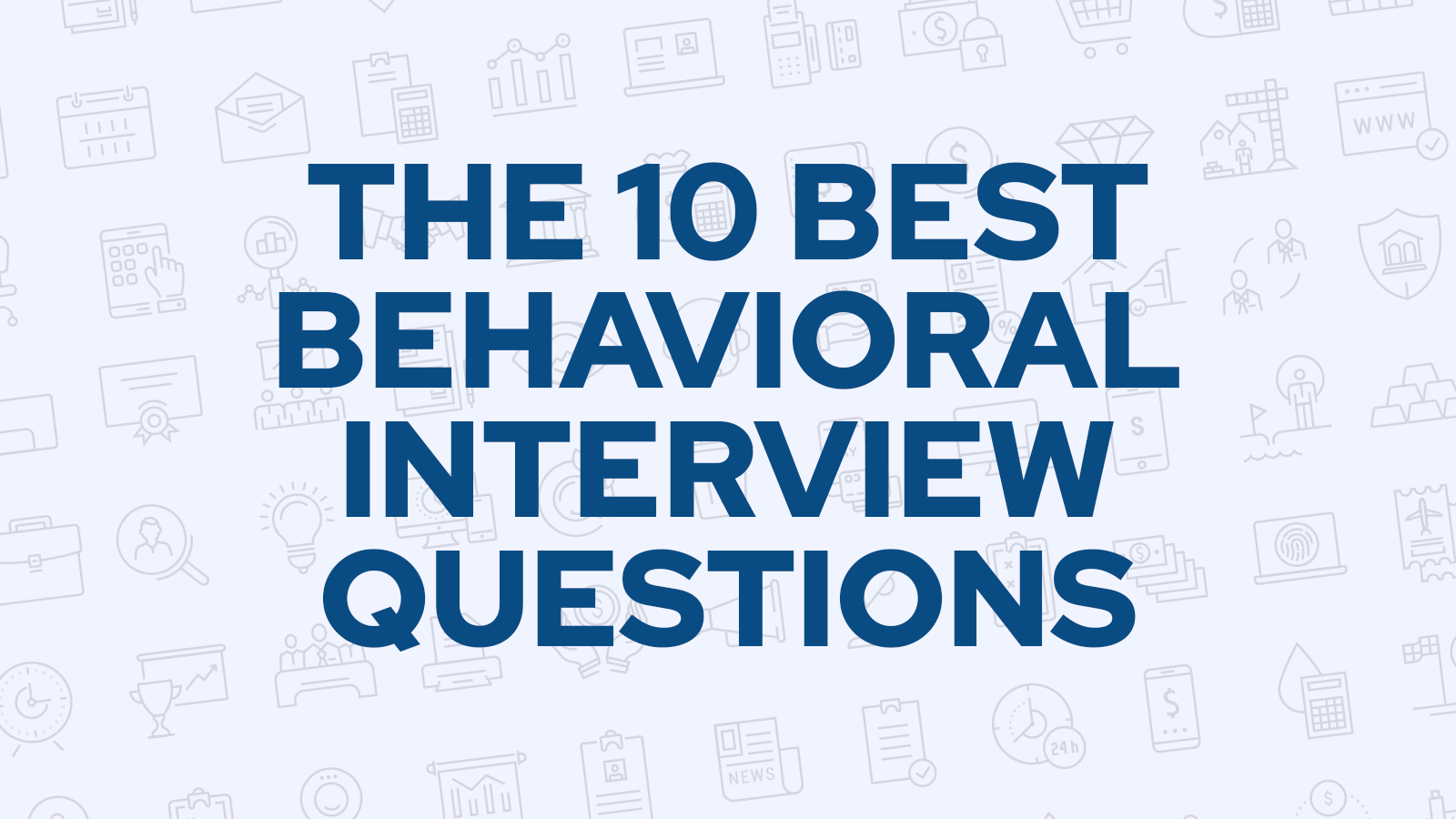Most hiring failures aren’t about skills — they’re about poor cultural fit. If your interviews aren’t revealing how candidates align with your company’s values, communication style, and team dynamics, you’re flying blind. These 10 behavioral interview questions are designed to uncover the traits that actually predict long-term success.
Table of Contents
-
- Questions to Assess Cultural Fit: Why It Matters More Than Ever in 2025
- The Psychology Behind Cultural Fit in Hiring
- Understanding Company Culture
- 10 Behavioral Interview Questions That Reveal True Cultural Fit
- Culture Add: Beyond Just a Fit
- Pro Tips for Interviewers: How to Spot a Good Cultural Fit
- Tools That Take the Guesswork Out of Cultural Fit
- Final Thoughts: Hiring for Fit, Not Just Function
- Test OAD for Free
Questions to Assess Cultural Fit: Why It Matters More Than Ever in 2025
In 2025, the talent war isn’t just about skills — it’s about values alignment. Aligning with the company’s values and company’s core values is crucial for both job candidates and hiring candidates, as it ensures a strong foundation for long-term success. Top candidates are no longer chasing just compensation or job titles; they’re actively seeking environments that reflect their beliefs, working styles, and long-term aspirations. Companies that fail to account for this shift risk higher turnover, lower engagement, and missed growth targets. Failing to assess culture fit and business culture can also lead to poor integration of new employees, impacting overall organizational success.
A poor cultural fit can cost up to 50–60% of an employee’s annual salary, according to SHRM — and that doesn’t include the ripple effects on morale, productivity, team cohesion, or the broader corporate culture. This highlights the importance of finding a good match between candidates and the organization.
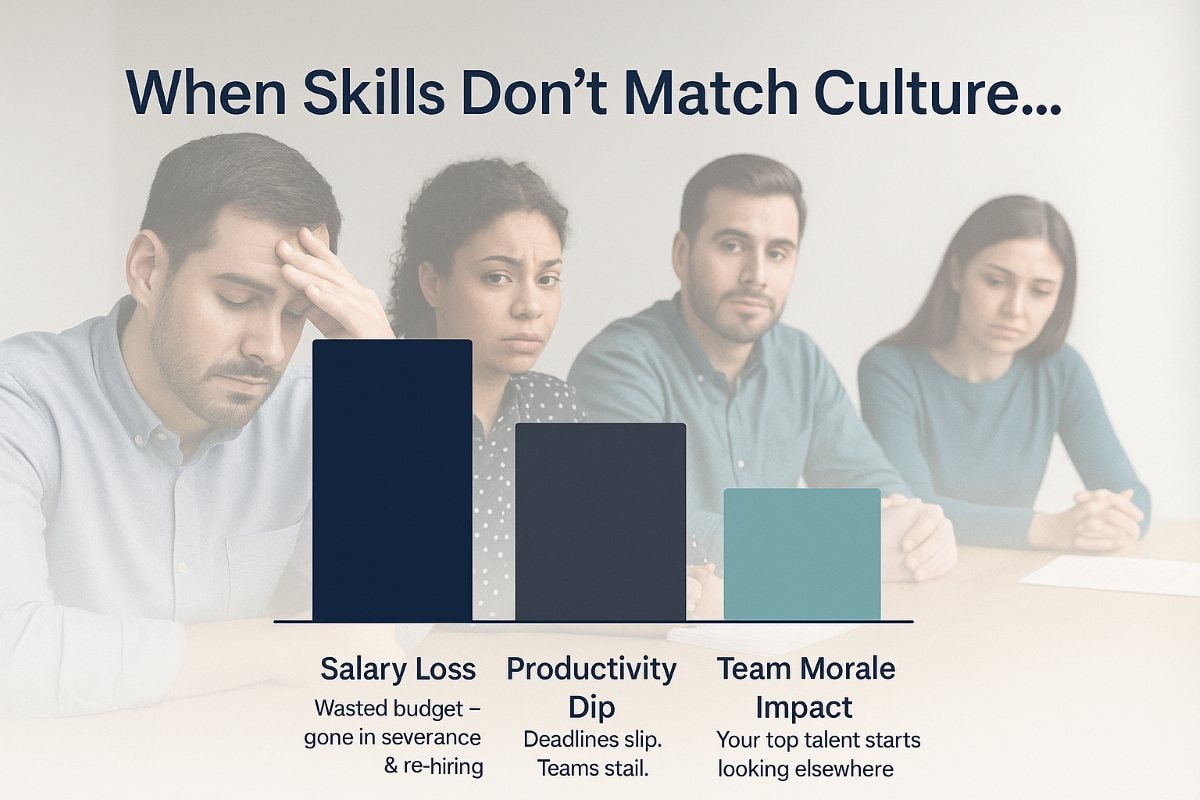
Using cultural fit questions, fit interview questions, and culture fit interview questions during the hiring process can help assess culture and ensure alignment with the company’s goals.
Today’s high-performing organizations don’t just assess whether someone can do the job. They ask:
Will this person thrive in how we work, communicate, and make decisions?
That’s why modern hiring teams are shifting from “culture fit” to “culture add.” The goal isn’t to hire clones — it’s to bring in people whose behaviors and values expand and strengthen your company’s DNA, not dilute it. Understanding the company’s culture and company’s goals is a key part of hiring candidates who will thrive.
The Psychology Behind Cultural Fit in Hiring
Cultural fit isn’t about personality quirks or surface-level chemistry — it’s rooted in behavioral science. Psychologists have long studied how traits like decision-making, communication style, and stress response influence performance in specific environments. When hiring managers ignore these traits, they’re left to rely on intuition — and that opens the door to unconscious bias and inconsistent results. Recognizing unconscious biases in the interview process is essential to ensure fair and equitable hiring decisions.
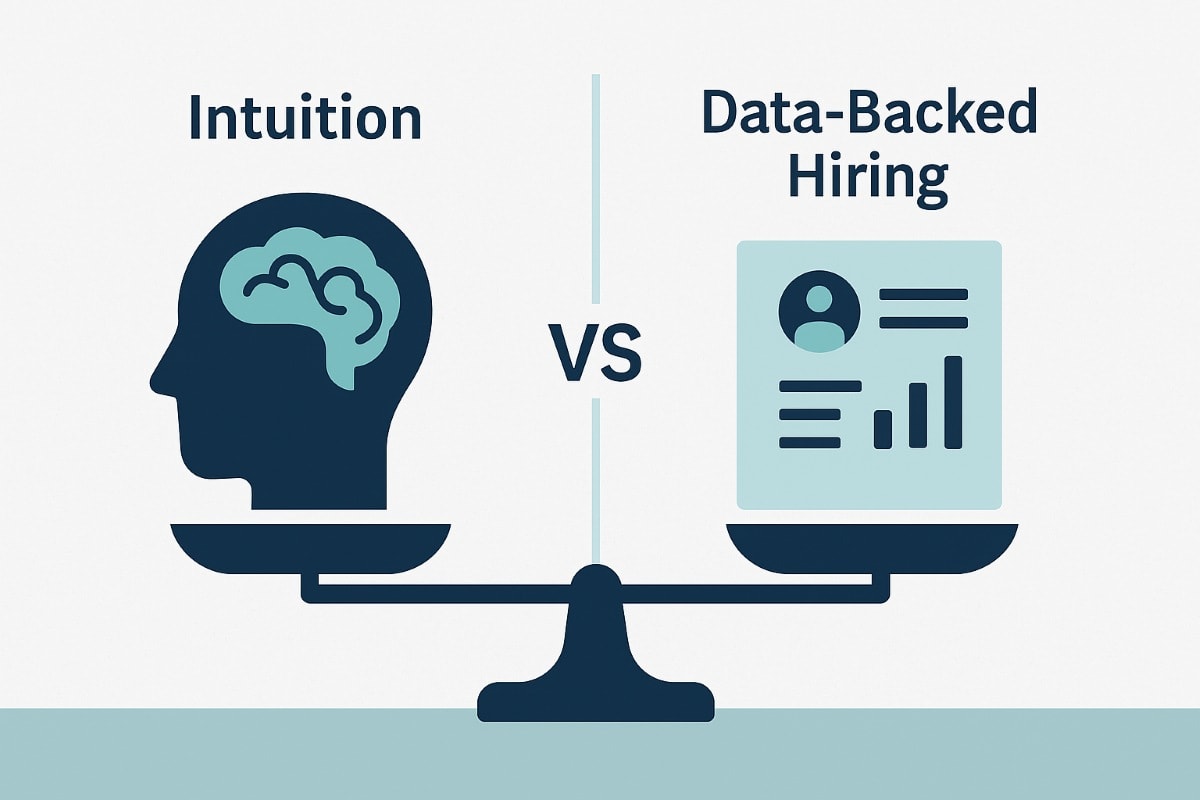
Traditional interviews often focus on past achievements. But past success doesn’t guarantee future performance unless the environment stays the same. That’s why evaluating behavioral alignment with your organization’s culture is a stronger predictor of long-term success than résumé highlights alone.
Tools like the OAD Behavioral Assessment bridge this gap by measuring how a candidate is wired to think, act, and interact. These assessments help in assessing culture fit by evaluating personality traits and the candidate’s personality, ensuring a good match with your organization’s culture. That insight helps hiring teams make more objective, data-driven decisions — and avoid costly misfires.
By assessing culture and assessing culture fit during the job interview, organizations can improve the overall interview process, bring in diverse perspectives, and make better long-term hiring decisions.
Understanding Company Culture
Company culture isn’t just a mission statement or set of core values on a website — it’s the lived experience of how people collaborate, make decisions, and show up every day.
It shapes everything from communication norms and leadership styles to how feedback is delivered and success is recognized.
A strong culture doesn’t happen by accident.
When employees see their company’s values reflected in real behaviors — not just policies — they’re more likely to feel engaged, stay longer, and perform at a higher level. That’s why culture isn’t just an HR concern — it’s a business strategy.
For hiring managers, understanding your company’s culture is essential to identifying candidates who will thrive in it.
That means going beyond technical skills and assessing how a candidate’s personality traits, working style, and beliefs align with the way your team actually operates.
When cultural fit is baked into the hiring process, you build teams that aren’t just high-performing — they’re aligned, resilient, and ready to grow together.
10 Behavioral Interview Questions That Reveal True Cultural Fit
Most interviews rely on predictable scripts: *“Tell me about yourself.” “What are your strengths?” “Why should we hire you?”*The problem? Everyone has rehearsed answers — and they reveal very little about how a candidate actually behaves on the job.
Behavioral questions change the game. Instead of hypotheticals, they ask for real examples. The goal is to uncover how a candidate actually thinks, responds, and interacts — especially in situations that mirror your company’s culture, pace, and communication norms.
The following are examples of cultural fit questions, fit interview questions, and culture fit interview questions commonly used in the job interview and interview process. These questions are designed to assess whether a candidate’s personality, values, and working style align with your organization.
The following 10 behavioral interview questions are designed to do exactly that. Backed by hiring psychology and organizational behavior research, each one targets key traits that impact culture fit: adaptability, initiative, feedback style, and more. They help reveal personality traits, management styles, and leadership style, as well as the candidate’s ability to contribute to your team.
Each question targets a key part of assessing the candidate’s ability to align with company culture. Providing a sample answer for each can help interviewers evaluate responses more effectively.
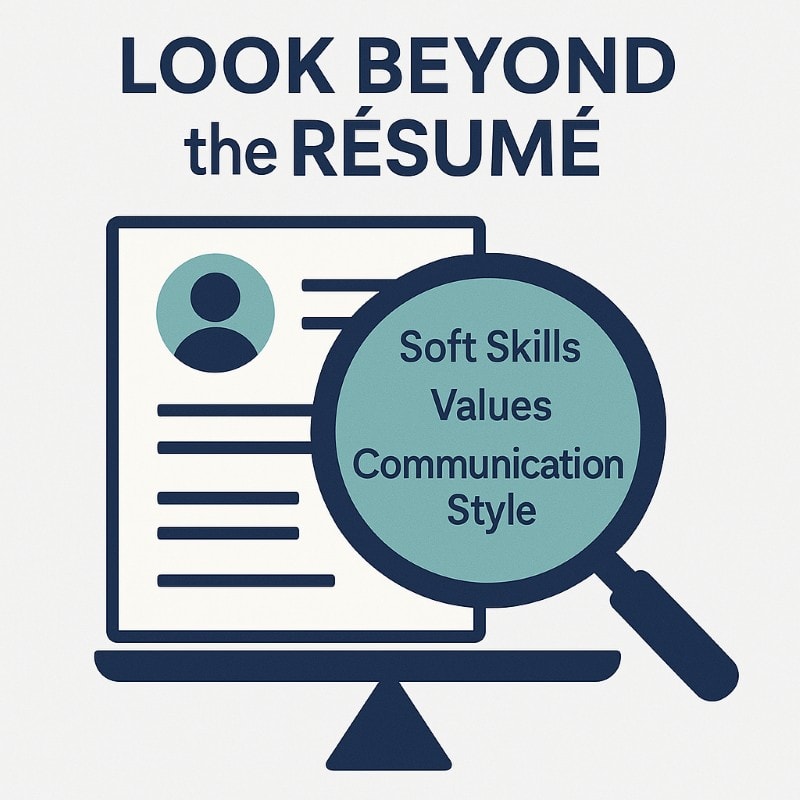
Use them to go beyond surface-level impressions — and find the candidates who don’t just look good on paper, but actually belong in your environment.
1. What’s the most difficult decision you’ve made in the last six months?
This question reveals far more than just the decision itself — it uncovers a candidate’s problem-solving process, risk tolerance, and internal compass. When asking about their most difficult decision, encourage candidates to reference a previous role to provide context for their choices and actions. Do they take ownership of complex situations, or shift blame? Do they seek input from others or go it alone? And most importantly — do their decision-making values align with your organization’s culture?
Look for signs of:
- Accountability under pressure
- Alignment with your company’s core values
- Willingness to take calculated risks without compromising integrity
- The candidate’s ability to handle complex decisions in alignment with company values
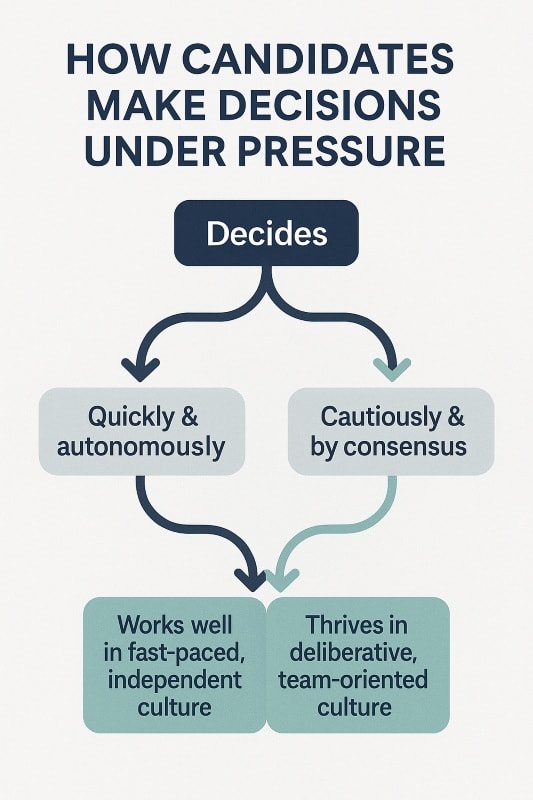
For example, if your culture values speed and autonomy, a candidate who describes slow, consensus-based decision-making might clash with how your team operates — even if they’re technically qualified.
2. What role do you naturally gravitate towards in a team, and why?
Every high-performing team depends on more than just hard skills — it thrives on complementary personalities, communication styles, and team dynamics. Understanding a candidate’s personality traits helps determine what kind of team member they will be and how they might contribute to the team’s success. This question helps uncover where a candidate sees themselves in the group context: do they lead, support, challenge, mediate, or innovate?
It’s not about right or wrong — it’s about fit. A candidate who thrives in a fast-moving, flat structure might feel stifled in a rigid hierarchy. Some teams value collaboration and look for candidates who share those values, while someone who prefers to observe and analyze could struggle in a culture that prizes constant collaboration.
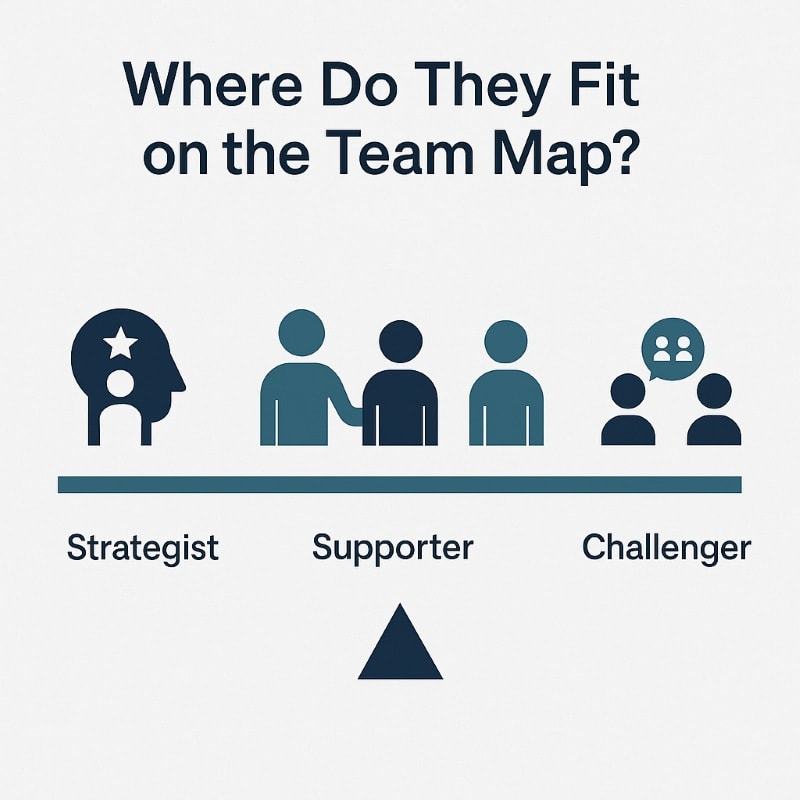
What to listen for:
- Self-awareness of their team role
- Clear reasoning behind their natural tendencies
- How their style aligns or conflicts with your current team structure
3. Tell me about a time you went above and beyond in your role.
This question reveals how candidates define ownership, motivation, and impact — all essential indicators of how they’ll show up day to day. People who go beyond expectations typically do so not for recognition, but because they’re internally driven and aligned with the company’s mission. Candidates who consistently put in extra effort are more likely to align with high-performing cultures.
Look for examples that reflect:
- Proactive behavior without being prompted
- Creativity in solving problems or improving processes
- A strong sense of responsibility tied to team or company success
- Commitment to meeting deadlines, even when it requires going beyond their usual responsibilities

Someone who only “goes above and beyond” under micromanagement or crisis pressure may not thrive in a culture that rewards autonomy and initiative.
4. Describe a time when you failed to meet a goal. What did you learn?
Failure isn’t just inevitable — it’s informative. This question probes how candidates handle setbacks, extract lessons, and adapt their behavior going forward. In companies that value resilience and continuous improvement, this response can be more revealing than any success story.
What you want to hear:
- Honest reflection without defensiveness
- Specific lessons learned — not vague clichés
- Evidence of changed behavior or improved outcomes in future situations
- Willingness to seek out and apply constructive feedback after setbacks
Cultural fit isn’t about perfection — it’s about the ability to grow within your system. Candidates who own their mistakes and evolve from them are more likely to succeed long-term.
5. What are three things you would need from us to be successful in this role?
This question flips the script — instead of asking what they’ll bring to the company, you’re asking what they need from you. The answer reveals how well the candidate understands their own working style, what kind of support systems they value, and whether those expectations align with your company’s current culture and resources. Candidates might request support for work-life balance, more personal time, or opportunities to pursue their career goals.
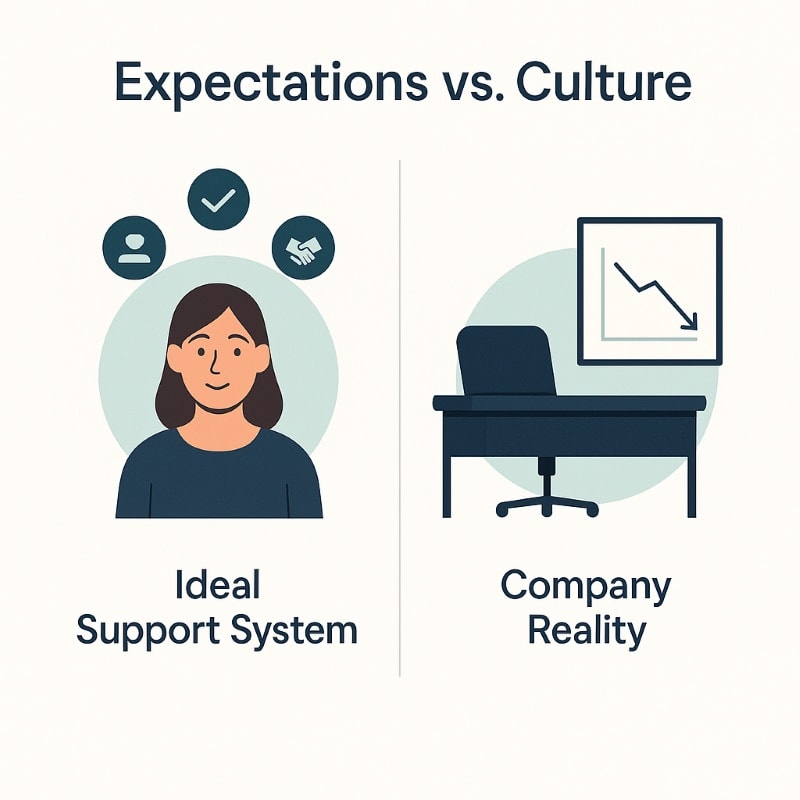
Listen for:
- Clarity and specificity (vague answers = red flag)
- Requests that align with your company’s core values (e.g., feedback, autonomy, collaboration)
- Requests that fit your company’s working environment (such as office layout, culture, or support for work-life balance)
- Signs of self-awareness and realistic expectations
It also opens a valuable window into onboarding success, manager-employee fit, and whether the candidate’s idea of their “dream job” matches the reality of your organization.
6. How do you prioritize your tasks when everything seems urgent?
Every workplace has crunch moments.
This question reveals how a candidate navigates pressure, conflicting demands, and shifting priorities — all of which directly impact team performance and day-to-day execution.
Look for:
- A structured approach (vs. vague “I just get it done” answers)
- Awareness of what’s mission-critical vs. reactive
- Communication habits — do they clarify priorities or assume?
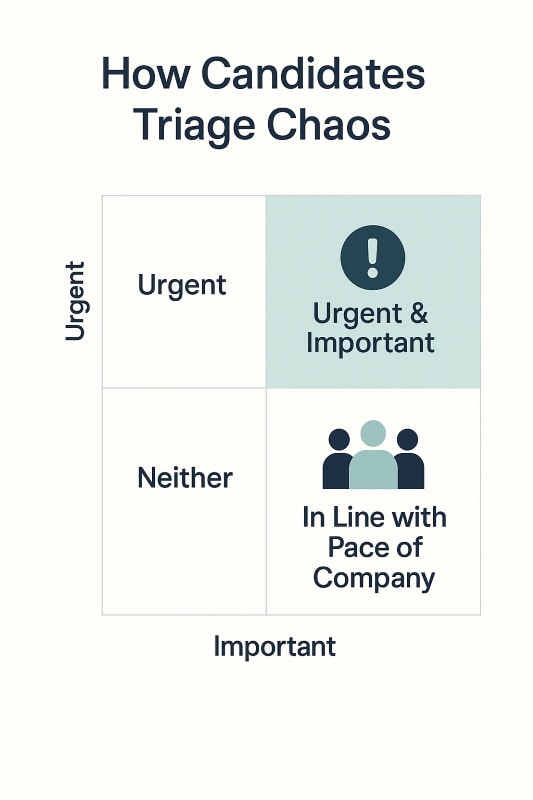
This also highlights alignment with your company’s management style:
If your culture thrives on speed and autonomy, a candidate who needs constant clarity and direction may struggle — no matter how skilled they are.
7. What’s the most important thing our company could do to support your professional growth?
Top performers don’t just want a job — they want to grow.
This question surfaces what the candidate values in long-term development: mentorship, feedback, stretch assignments, or continuous learning. It also shows how proactive they are about shaping their own career trajectory.

Listen for:
- A clear sense of direction or learning goals
- Alignment with what your company can realistically offer
- Clues about whether they view growth as a shared responsibility or a solo journey
A disconnect here often signals future disengagement. If your workplace prioritizes cross-functional exposure, but the candidate craves a rigid advancement track, it’s worth a deeper conversation — before the offer letter goes out.
8. Can you give an example of a time you had to handle a difficult stakeholder?
Whether it’s a demanding client, a skeptical executive, or a combative colleague — how someone handles conflict reveals a lot about their emotional intelligence, patience, and communication style. Sometimes, candidates have experienced conflict with a hiring manager or supervisor; how they approached and resolved these situations can demonstrate openness, self-awareness, and a willingness to learn from challenging experiences.
This question helps you assess how a candidate navigates tension while staying aligned with your company’s values and brand.
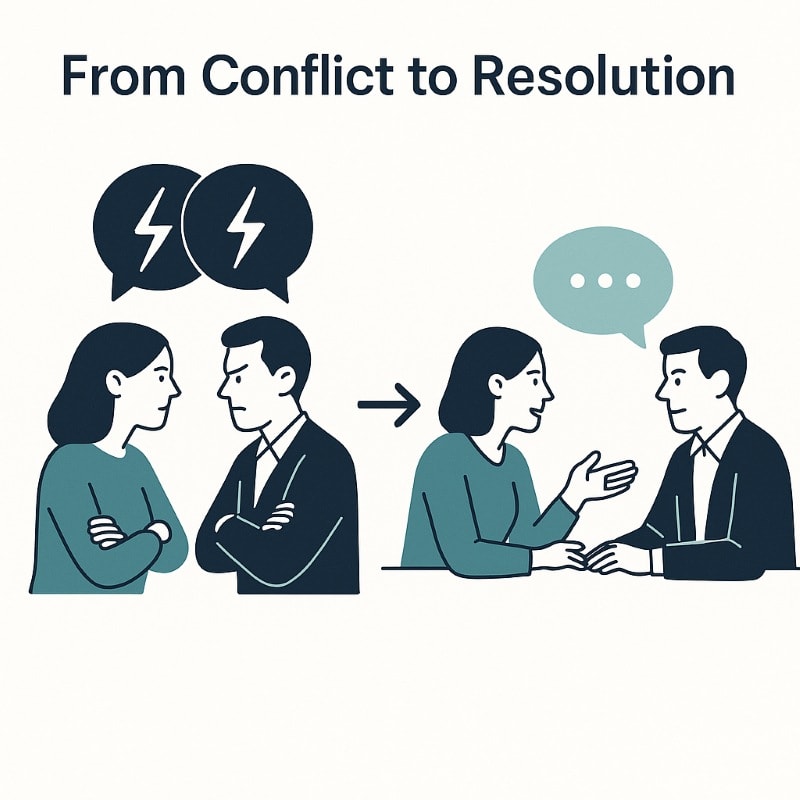
Look for:
- Ability to stay calm and professional under pressure
- Evidence of listening and adjusting communication based on audience
- Focus on outcomes — not just emotion management
- Ability to resolve issues with a hiring manager or other authority figure
The right answer doesn’t have to end in a fairy tale.
What matters is whether the candidate took ownership of the relationship, maintained integrity, and kept moving the conversation forward — even if the resolution wasn’t perfect.
9. What would you do differently if you could go back and change one thing in your career?
This question taps into a candidate’s capacity for reflection, humility, and long-term learning.
It shifts the focus from résumé polish to real growth — and gives you a clearer view of how they’ve evolved professionally and personally over time.
What to listen for:
- Ownership over past decisions without excuses
- A meaningful lesson or pivot point — not just regret
- A mindset of progress over perfection
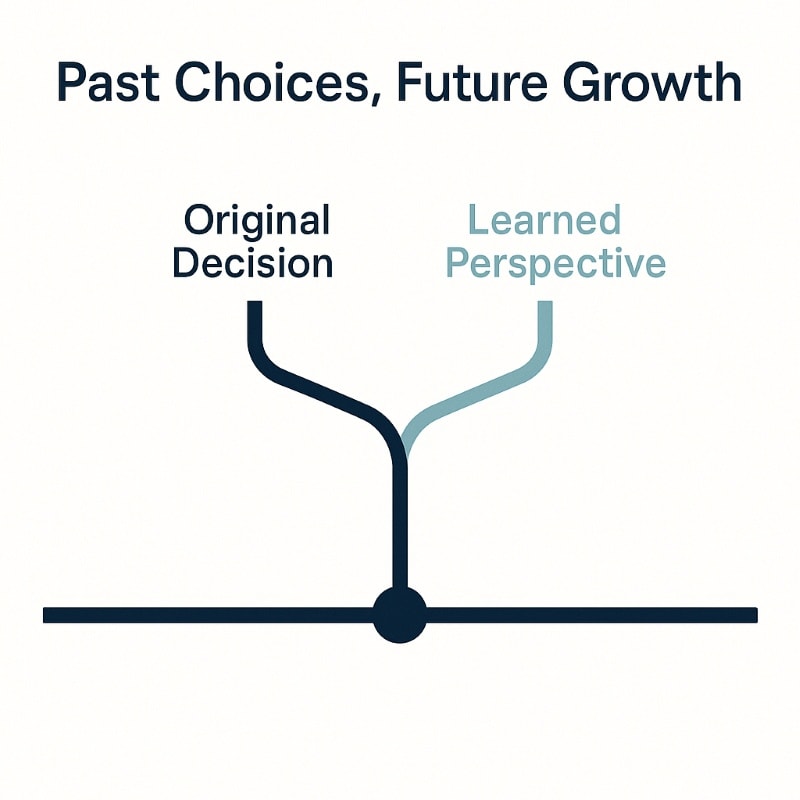
In growth-driven cultures, the ability to self-assess and adapt is often more valuable than a spotless track record. This question reveals whether the candidate is a learner — or someone who’s simply repeating the past.
10. What kind of work environment helps you thrive — and what holds you back?
This question is one of the clearest windows into whether someone will fit — or fight — your culture.
It helps you understand their preferences around pace, structure, communication, and autonomy. It also reveals whether their definition of a “dream job” matches the reality of your organization’s daily rhythm.
Job seekers should reflect on their preferred working environment and consider how it aligns with the organization’s culture, as this alignment is crucial for long-term satisfaction and success.
You’re listening for:
- Specifics that align (or clash) with your team’s working style
- Clarity around what motivates or demotivates them
- Emotional maturity in how they talk about past environments
Some candidates thrive on collaboration and constant feedback. Others need deep focus and minimal oversight. Knowing this upfront helps avoid costly misalignment — and ensures your next hire doesn’t just survive, but truly thrive.

Culture Add: Beyond Just a Fit
Hiring for cultural fit helps ensure candidates align with your existing norms — but hiring for culture add takes it further.
It’s about bringing in people who not only align with your values but also introduce new ideas, perspectives, and working styles that strengthen and expand your culture.
While “fit” keeps your culture stable, “add” helps it evolve.
Candidates who bring diverse experiences, creative thinking, or unconventional approaches can challenge groupthink, uncover blind spots, and fuel innovation — all while contributing to a shared sense of purpose.
Companies that prioritize culture add benefit from:
- Broader perspectives that enhance team problem-solving
- A more inclusive, adaptable work environment
- Higher engagement from employees who feel empowered to show up as their authentic selves
The result? Teams that are not only cohesive — but resilient, future-ready, and capable of growing alongside the business.
Pro Tips for Interviewers: How to Spot a Good Cultural Fit
Even with the right questions, how candidates answer often matters more than what they say. Assessing culture fit is a key part of the interview process, as it helps determine whether a candidate will align with your company’s values and contribute positively to the team. Great interviewers listen for behavioral signals that reflect self-awareness, alignment with company values, and the ability to thrive in the real-world dynamics of the team — not just hypothetical scenarios.
Here’s what to watch for:
- Consistency: Do their answers align across questions — or do they shift depending on what they think you want to hear?
- Self-awareness: Are they reflective, grounded, and clear about what environments bring out their best?
- Language match: Do they naturally use terms that mirror your company’s culture (e.g., “collaboration,” “ownership,” “speed”)?
- Energy alignment: Do they seem energized by the same pace, challenges, and communication norms your team values?
- Candidate’s personality and culture fit interview questions: Observe the candidate’s personality and how they respond to culture fit interview questions during the job interview to better understand their alignment with your culture.
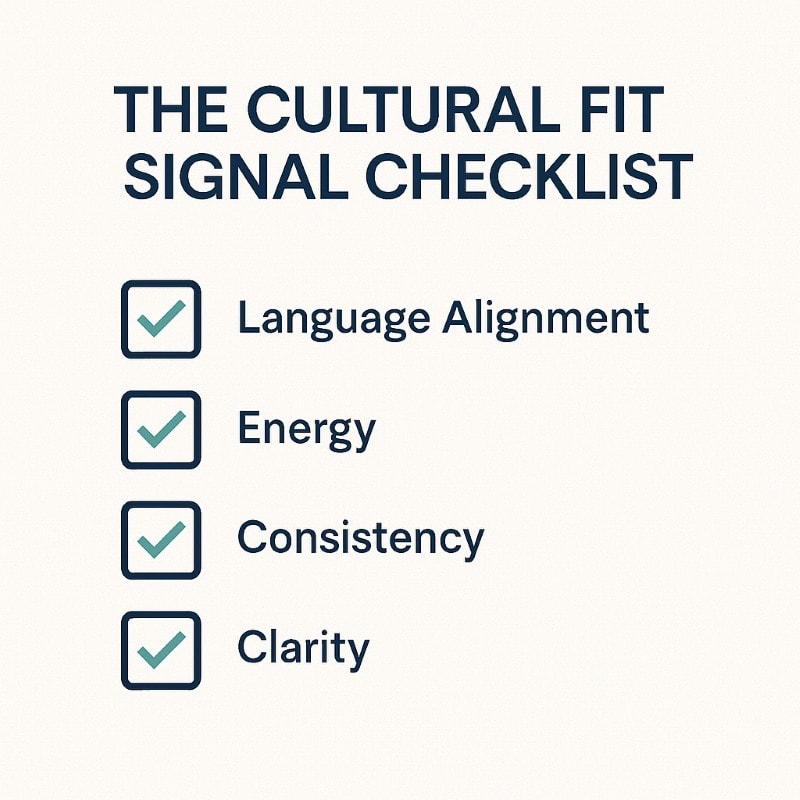
And don’t underestimate what goes unsaid. If a candidate struggles to describe what kind of culture they thrive in — or downplays past mismatches — that could be a sign they haven’t done the inner work required for long-term fit.
Tools That Take the Guesswork Out of Cultural Fit
Even the best interviewers have blind spots. That’s why top companies are turning to behavioral science to move beyond intuition and surface-level impressions — and toward data-driven cultural alignment. These tools help assess culture fit among job candidates, ensuring alignment with the company’s business culture and core values.
The OAD Behavioral Assessment gives hiring managers a validated, science-backed lens into how candidates are wired to work:
- Do they prefer working independently or collaboratively?
- Are they comfortable with risk or do they lean toward structure?
- How do they respond to feedback, stress, and ambiguity?
Unlike personality quizzes or casual team fit surveys, OAD uses decades of psychometric research to map candidates’ traits against real business environments — helping you make more confident, bias-resistant decisions and bring in diverse perspectives to your team.
Companies like Amazon, Netflix, and Tesla are known for building strong cultures by hiring for specific behavioral traits, not just résumés. But instead of relying on gut feel or founder intuition, tools like OAD allow scaling teams to apply the same rigor — with repeatable, measurable accuracy.
Final Thoughts: Hiring for Fit, Not Just Function
Hiring for cultural fit isn’t about hiring people who “feel good” in the interview. Identifying the key part of cultural fit is essential for integrating new employees and ensuring a good match between the candidate and your organization. It’s about identifying the behavioral traits that consistently lead to long-term success in your specific environment — whether that means autonomy, collaboration, feedback tolerance, or fast-paced execution.
Skills can be taught. Values alignment can’t.
By asking the right behavioral questions — and combining them with science-backed tools like the OAD Behavioral Assessment — you position your company to build a team that performs and sticks around.
Because the cost of a poor cultural fit isn’t just financial. It’s emotional, operational, and cultural. Every hiring decision directly impacts your corporate culture. And in 2025, you can’t afford to get it wrong.
Test OAD for Free
Want to see how OAD can help you predict cultural fit with clarity and confidence?
Our behavioral assessment gives hiring teams a fast, accurate read on how candidates think, work, and interact — before they join your team.
Test OAD for free to see how data-driven hiring can reduce guesswork, improve retention, and help you build stronger, more aligned teams from day one.
